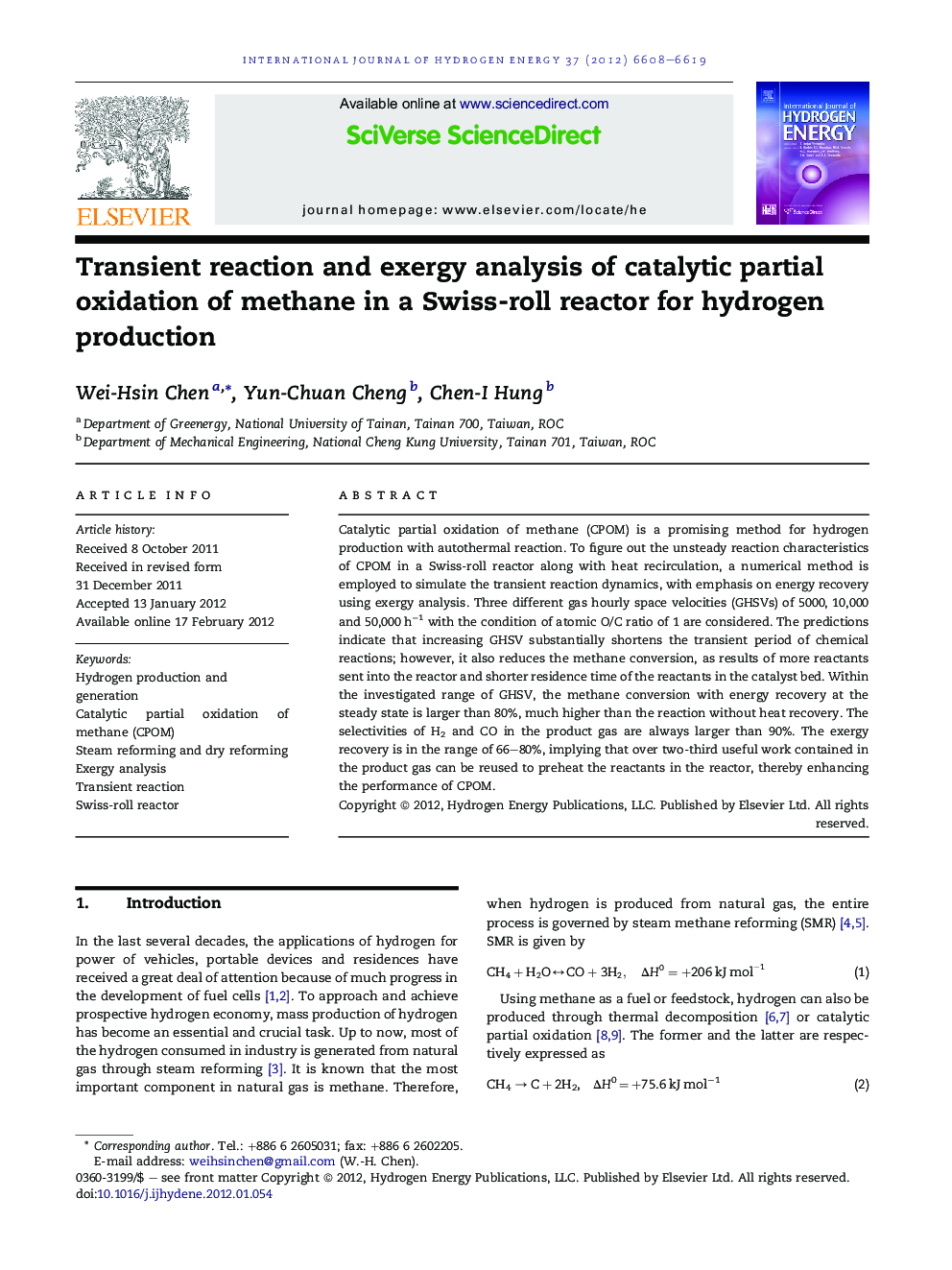| Article ID | Journal | Published Year | Pages | File Type |
|---|---|---|---|---|
| 1276600 | International Journal of Hydrogen Energy | 2012 | 12 Pages |
Catalytic partial oxidation of methane (CPOM) is a promising method for hydrogen production with autothermal reaction. To figure out the unsteady reaction characteristics of CPOM in a Swiss-roll reactor along with heat recirculation, a numerical method is employed to simulate the transient reaction dynamics, with emphasis on energy recovery using exergy analysis. Three different gas hourly space velocities (GHSVs) of 5000, 10,000 and 50,000 h−1 with the condition of atomic O/C ratio of 1 are considered. The predictions indicate that increasing GHSV substantially shortens the transient period of chemical reactions; however, it also reduces the methane conversion, as results of more reactants sent into the reactor and shorter residence time of the reactants in the catalyst bed. Within the investigated range of GHSV, the methane conversion with energy recovery at the steady state is larger than 80%, much higher than the reaction without heat recovery. The selectivities of H2 and CO in the product gas are always larger than 90%. The exergy recovery is in the range of 66–80%, implying that over two-third useful work contained in the product gas can be reused to preheat the reactants in the reactor, thereby enhancing the performance of CPOM.
► A numerical method is employed to simulate the catalytic partial oxidation of methane. ► Increasing GHSV substantially shortens the transient period of chemical reactions. ► The methane conversion with energy recovery at the steady state is larger than 80%. ► The selectivities of H2 and CO in the product gas are always larger than 90%. ► For GHSV between 5000 and 50,000 h−1, the exergy recovery is in the range of 66–80%.
